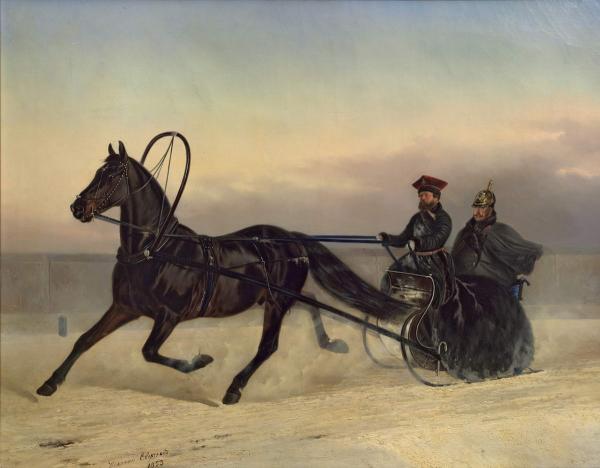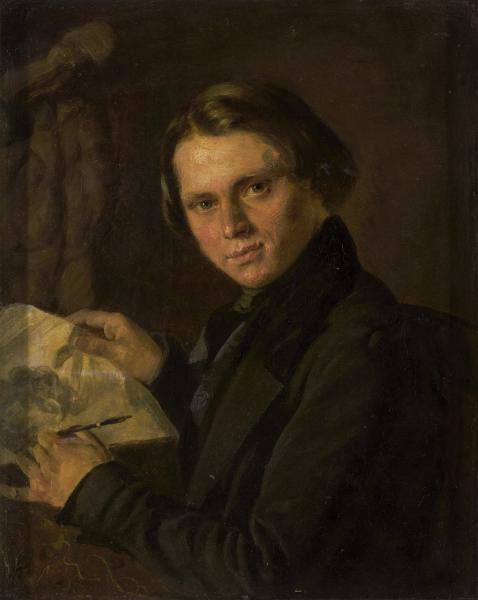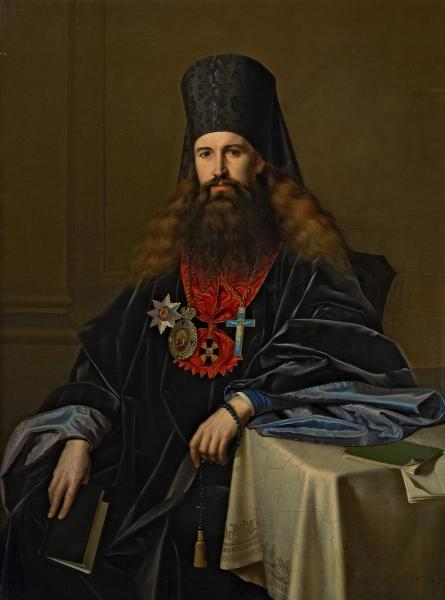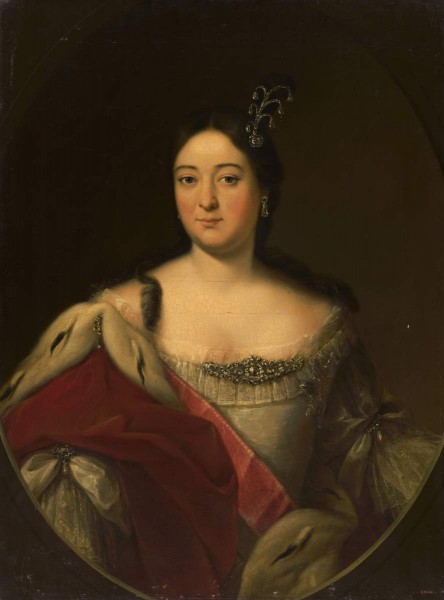The artist is Sverchkov

Nikolai Egorovich Sverchkov became famous thanks to paintings depicting thoroughbred horses, dogs, hunting scenes, three and genre stories with the participation of horses. The gift of the animalist, the ability to extremely truthfully and freely portray scenes with horses helped Sverchkov to take the place of the artist of the Khrenovsky and Chesmensky state horse factories, the largest in Russia. In this position, he created a whole gallery representing thoroughbred horses. The artist showed himself in the portrait genre. In the 1850s-1860s, Sverchkov more than once wrote portraits of emperors (Nicholas I, Alexander II) in the sleigh, practically without changing the composition of the picture, but varying only a landscape background, costumes and a suit of horses. In a later period, he created paintings for the plots of royal hunting and battal compositions.
The customer chose the shape of the portrait, which, along with the equestrian portrait, in the middle of the nineteenth century for some time gained popularity and existed as "canonical". It combines the elements of animalist, domestic and portrait genres, a kind of pharmacy and intimacy. In the canvas, the proud of the closedness and coldness of the monarch, the equanimity of the charioteer, and a frisky run of a thoroughbred horse along the snowy embankment are precisely noted in the canvas.
The portrait was very popular and repeatedly repeated and varyed by the artist: the composition of the composition was in the meeting with. With. Botkin, St. Petersburg; Option of the 1850s-in GE; 1895 – in the Far Eastern Art Museum.
The picture was lithograph. Yube in Berlin in the 1850s, in 1855-in. F. Timm (option with the image of the Peter and Paul Fortress in the background).
Nicholas I (1796–1855) is the third son of Emperor Paul I and Empress Maria Fedorovna, nee Princess Württemberg. Entered the throne in 1825. The board of Nicholas I was characterized by the centralization of state power and the regulation of all areas of activity. In 1826, the third branch of its own e was created. And. AT. Chancellery, designed to monitor the political well -being of subjects, and in 1827 – a censorship charter was published, called contemporaries “cast -iron”. The basis of domestic policy was the principle of “autocracy, Orthodoxy, nationality”. The inviolability of the autocracy was the basis of foreign policy. The role of the patron saint of Christian peoples under the rule of Muslims, adopted by the emperor, determined the eastern direction of foreign policy. Russian-Turkish war (1828–1829) contributed to the acquisition of the independence of Greece (1830). The last years of the reign of Nicholas I were overshadowed by military failures in the Crimean War (1853–1856). The identity and activity of the emperor caused conflicting assessments of contemporaries – from enthusiastic veneration (“knight of autocracy”) to categorical rejection (“gendarme of Europe”). Natalia Solomatina. Exhibition catalog in Malaga "The Romanov dynasty". 2017. With. 301.


